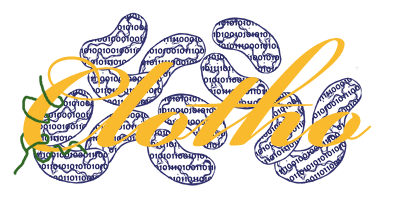Team:UC Berkeley Tools
From 2008.igem.org
| Line 3: | Line 3: | ||
{{Template:ClothoMenu}} | {{Template:ClothoMenu}} | ||
__NOTOC__ | __NOTOC__ | ||
| + | |||
| + | With >700 available parts and >2000 defined parts in the [http://partsregistry.org/Main_Page MIT Registry of Standard Biological Parts], and doubtless more parts local to the lab, synthetic biologists are now faced with the challenge of organizing, sorting, and editing these parts from an ever-growing collection of DNA. Due to this rapidly expanding collection, synthetic biology is reaching the point at which composite systems are becoming more and more prevalent. Computational tools are becoming increasingly needed to assist biologists to do the job, and it is no secret that many tools are indeed wheeling out into the community to help serve these needs. | ||
| + | |||
| + | Clotho is a toolset designed in a platform-based-design paradigm to consolidate all these tools into one working, integrated toolbox. Clotho is based on a core-and-hub system which manages multiple connections, each connection serving an independent purpose in an almost self-sufficient manner. Examples of connections include sequence viewers/editors, parts database managers, sequence alignment GUIs, and much more. Computer-savvy biologists can create new connections which will then be integrated into Clotho. In this tool-consolidation and customization it is hoped that, in the future, biologists need not look further for a program that provides the answer to their needs. | ||
==The Project== | ==The Project== | ||
| Line 10: | Line 14: | ||
<!--[[Image:DayShot_Campanile.png|thumb|The Campanile, UC Berkeley]]--> | <!--[[Image:DayShot_Campanile.png|thumb|The Campanile, UC Berkeley]]--> | ||
| - | |||
| - | |||
| - | |||
| - | |||
| - | |||
<!--- The Mission, Experiments ---> | <!--- The Mission, Experiments ---> | ||
Revision as of 10:43, 17 October 2008
With >700 available parts and >2000 defined parts in the MIT Registry of Standard Biological Parts, and doubtless more parts local to the lab, synthetic biologists are now faced with the challenge of organizing, sorting, and editing these parts from an ever-growing collection of DNA. Due to this rapidly expanding collection, synthetic biology is reaching the point at which composite systems are becoming more and more prevalent. Computational tools are becoming increasingly needed to assist biologists to do the job, and it is no secret that many tools are indeed wheeling out into the community to help serve these needs.
Clotho is a toolset designed in a platform-based-design paradigm to consolidate all these tools into one working, integrated toolbox. Clotho is based on a core-and-hub system which manages multiple connections, each connection serving an independent purpose in an almost self-sufficient manner. Examples of connections include sequence viewers/editors, parts database managers, sequence alignment GUIs, and much more. Computer-savvy biologists can create new connections which will then be integrated into Clotho. In this tool-consolidation and customization it is hoped that, in the future, biologists need not look further for a program that provides the answer to their needs.
The Project
Contact Us
For emails regarding any bugs: clothobugs AT googlegroups DOT com
For emails regarding any desired features: clothofeatures AT googlegroups DOT com
 "
"

